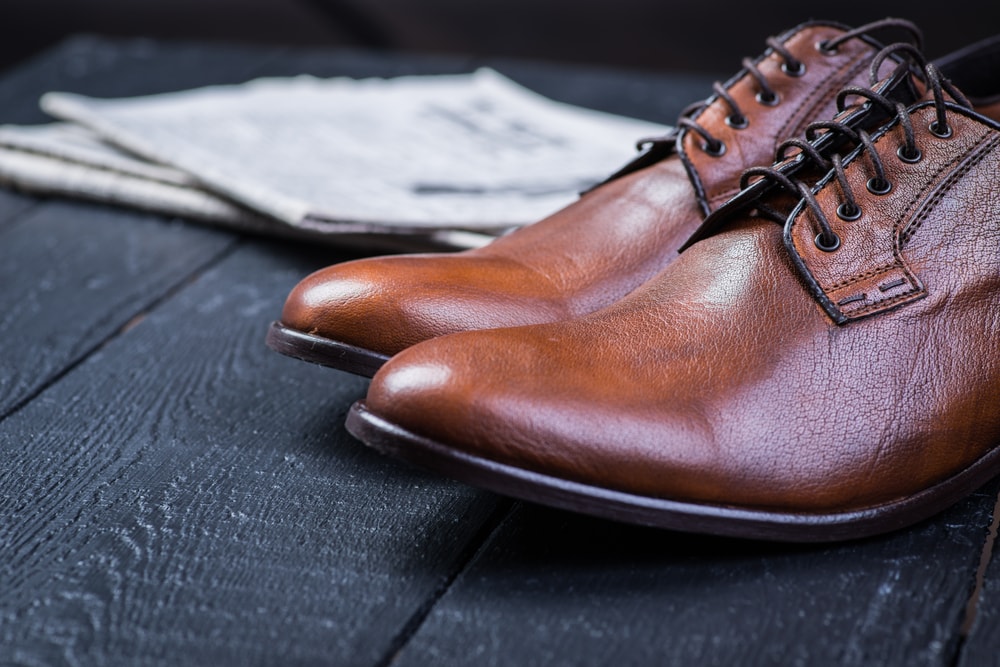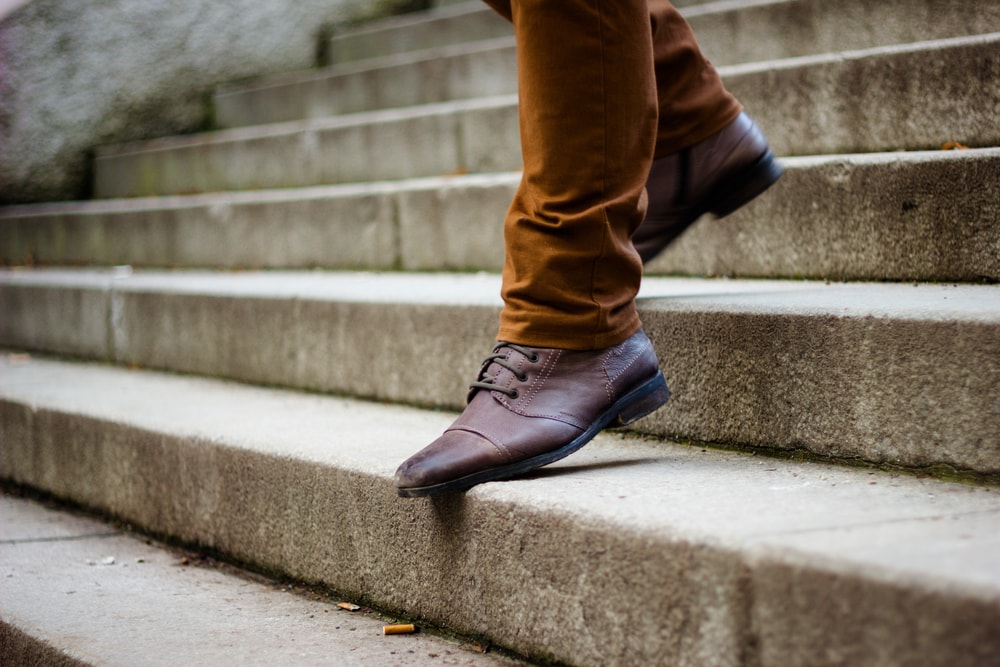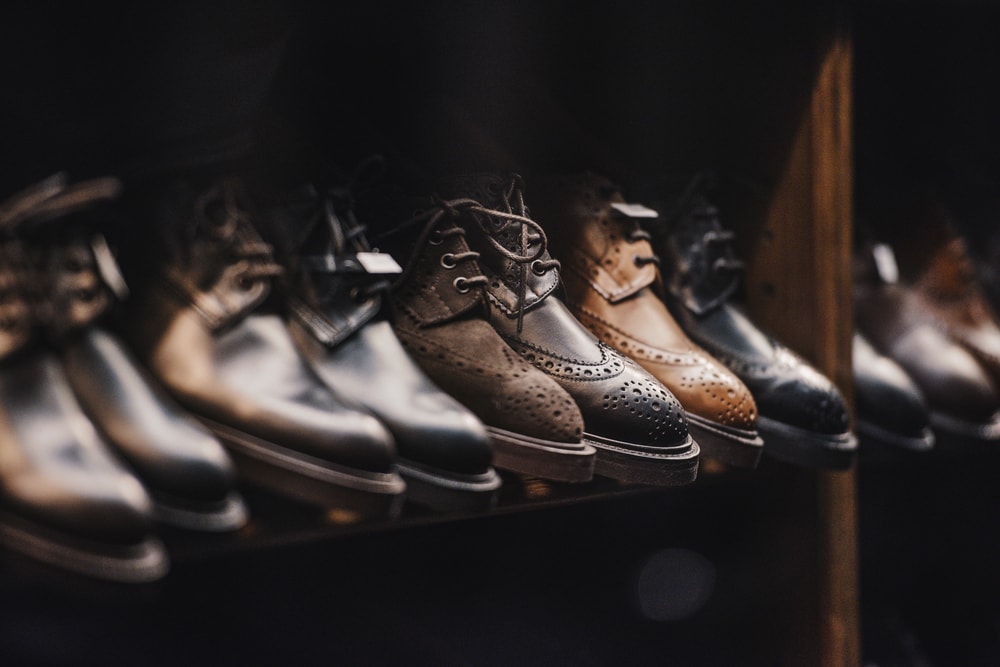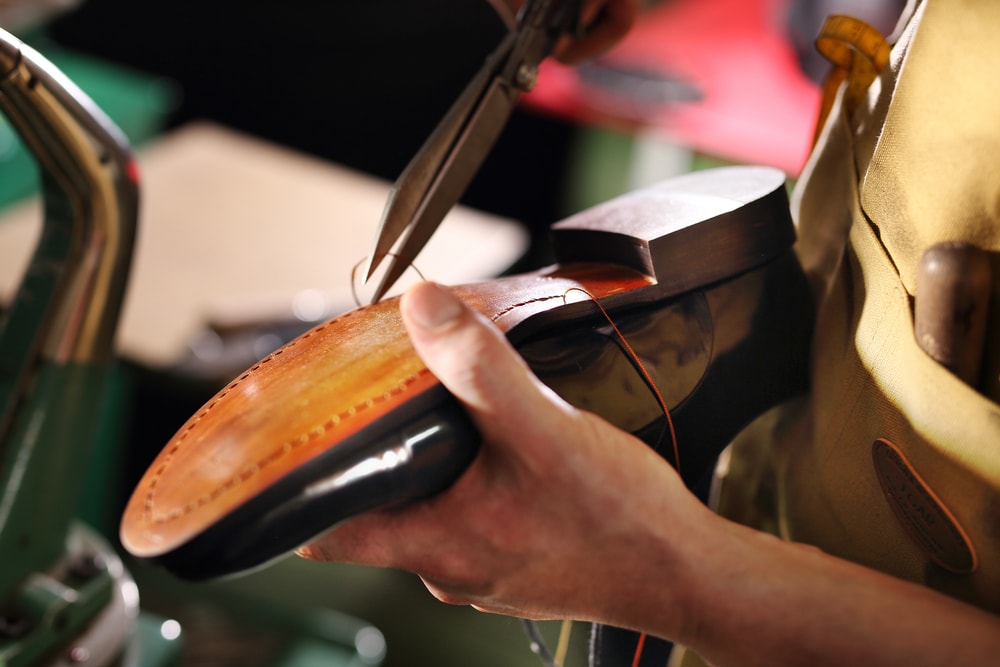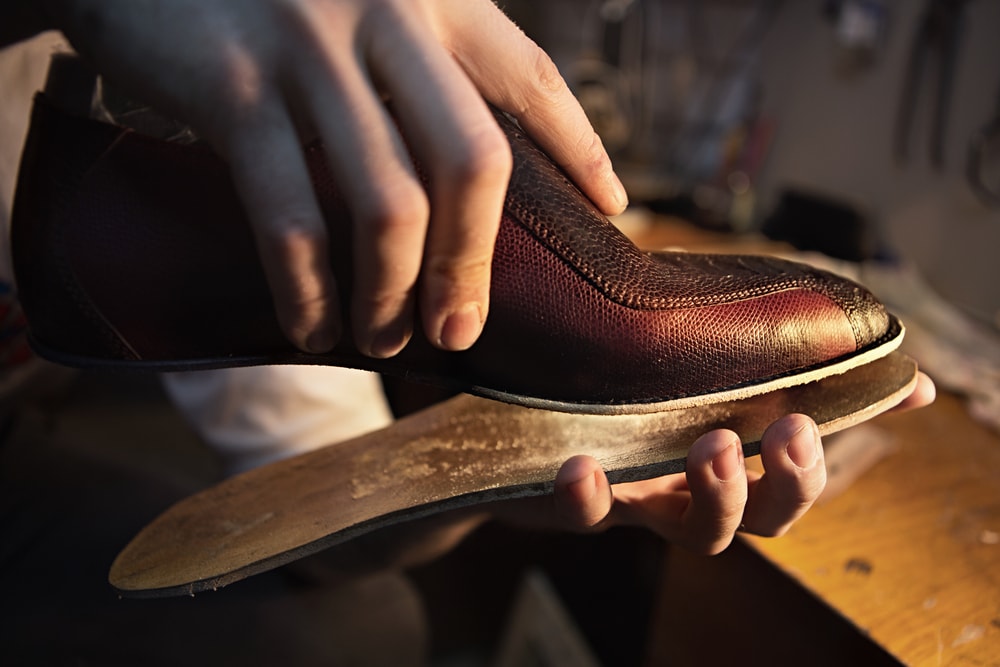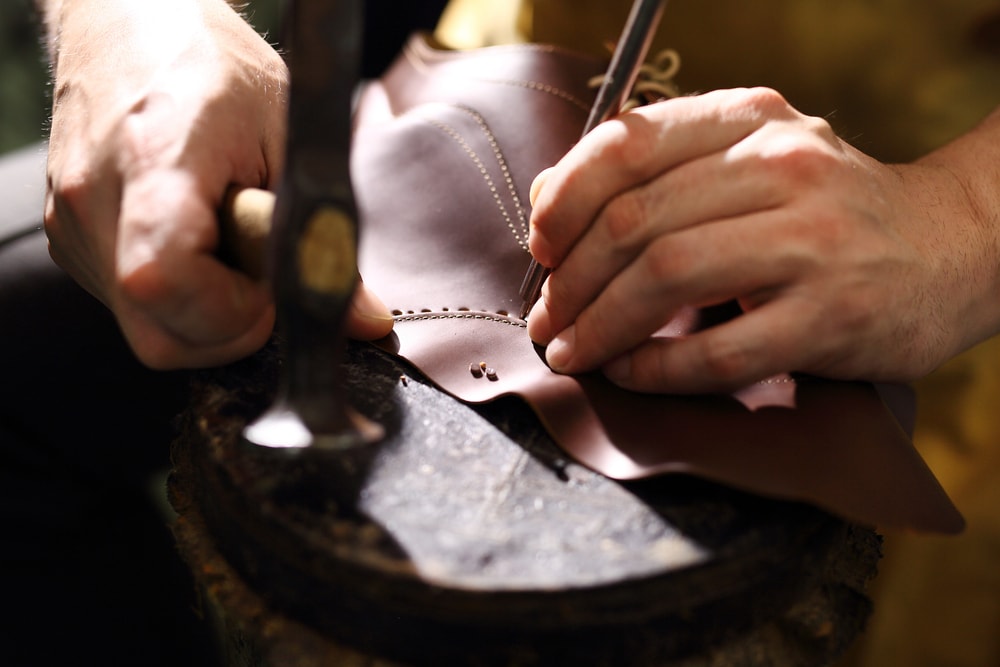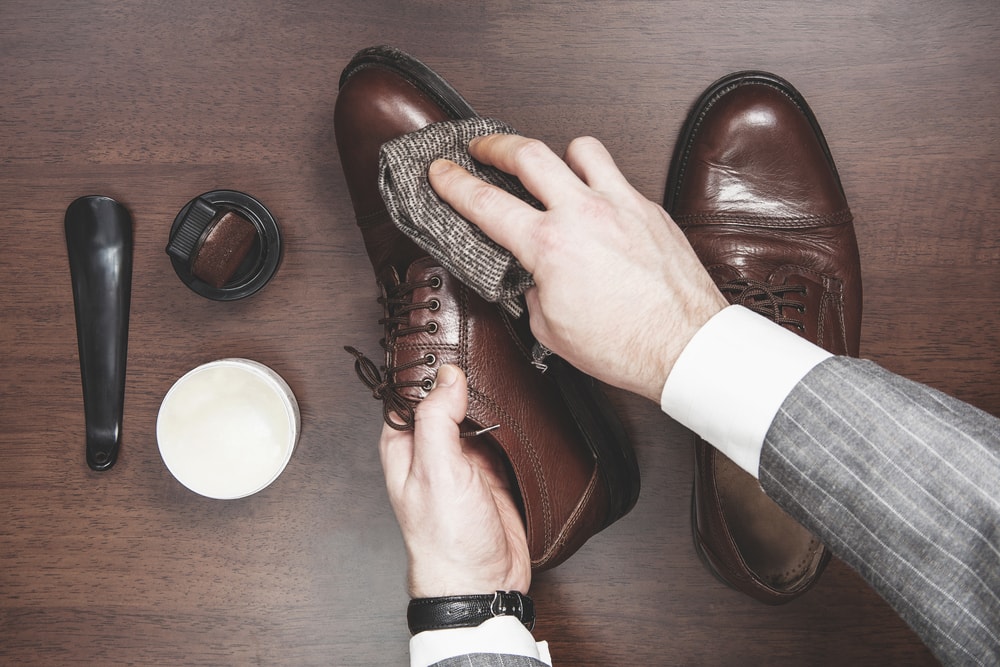The quality leather dress shoe is a staple of any gentleman’s wardrobe. Editor Chad Merchant peers into the process of shoemaking and tells you what to look for when buying your next pair.
Shoes, by their very design, are literally the foundation on which a man stands. If for no other reason, the fact that shoes absorb the force of a man’s weight several thousand times in an average day should compel the informed gentleman to care about what he puts on his feet.
Beyond this, of course, there is a significant appearance element. Notably distinct from the rest of a gentleman’s clothing, shoes are a visual punctuation mark and thus receive a disproportional amount of attention. Indeed, studies suggest that, despite covering just 5% of the body, shoes can make up over 30% of the visual judgement we make when sizing someone up. Simply put, shoes matter.
Durable shoes are a relatively new construct in the history of mankind. Until the Industrial Revolution of the 19th century, shoemaking was a traditional handicraft, and cordwainers and cobblers made shoes entirely by hand. Crafted one pair at a time, often at considerable expense, a gentleman’s status was easily determined by what he wore on his feet. These days, shoes still say a great deal about the man wearing them. As for handmade custom shoes, though bespoke craftsmen still exist today, shoemaking has become largely a commercial, mechanised process.
However, even with the rise of industry, fine quality footwear is still a mainstay, and a well-built shoe can last for decades. For any gentleman, the importance of a good shoe cannot be overstated. A fine pair of shoes can elevate an otherwise mediocre look, whilst a poor pair of shoes will drag down even the snappiest outfit. Invest wisely in a couple of pairs of high-quality, classically styled shoes, and perhaps have one pair to rotate in accordance with fashion trends.
Defining quality in footwear
An old saying is that a $200 pair of shoes will last twice as long as a $100 pair of shoes, but a $300 pair of shoes will last a lifetime. There’s a lot of truth to this, and it’s unquestionable that quality shoes are expensive. What defines a quality shoe, though? It’s a combination of three things, all tied together by a fourth.
1. The Upper: Know Your Leather
The upper is the part everyone sees, so it gets most of the attention. For the informed gentleman seeking good shoes, the holy grail of quality uppers is full-grain leather. Leather is the essential building block of every good shoe, so if you’re not up to date on your leather parlance, here’s a quick refresher.
Basically, leather for shoes – and we’re talking smooth leather here, not suede or nubuck – comes in three forms: corrected grain, top-grain, and full-grain. Animal hides, of course, are imperfect. They have marks, scars, or other flaws that make them unsuitable for use in shoes. There are some of applications for leather which don’t require a perfect surface, but shoes do.
So rather than sourcing and using only the very best portions of the hide for shoemaking, manufacturers of inexpensive shoes will take the imperfect portions, which are cheaper to acquire for obvious reasons, and literally sand off the surface of the hide. Then they build a new, chemical surface on top.
This is corrected grain leather, and it’s what’s used in the majority of dress shoes on the market, including some with fairly high price tags. They look nice and shiny in the store when they’re new, but because of the chemical layer on top of the sanded leather, corrected grain creases more severely, breathes more poorly, and ages quite badly (when compared to better leathers), as the finish can be easily damaged or even peel away or flake off of the leather. No superb quality shoe uses corrected grain leather.
Top grain leather is more akin to corrected grain leather than to full grain leather, but perhaps may have undergone less vigorous processing. It would be accurate to say that corrected leather falls under the category of top grain; both seek to create a uniform look in the leather. Corrected grain leather has the enamel-like chemical coating applied, top grain generally does not. It will, however, have been sanded, buffed, and processed to achieve a near-uniform appearance. Top grain leather is initially sturdy and attractive, but it doesn’t age well, as the strongest fibres of the hide have been sanded off.
Full grain leather is the best leather money can buy. It comes from the top layer of the hide with all the grain intact, thus, full grain leather. This grade of leather may have slight imperfections and blemishes, but it also has depth, character, and unsurpassed durability. This quality leather not only costs a lot for shoemakers to buy, but it’s also the most difficult leather to work with. This is a large factor in the high price of top quality shoes.
2. The Soles: Natural vs Synthetic
So now you know that full grain leather is something for which you should be looking. What about the second important component? That’s the soles, and again, the finest soles are made – at least in part – of good quality tanned leather. Synthetic soles are quite common, and hybrid soles incorporating both natural and man-made components are also easy to find. As materials used for soles has improved over time – as has as the technology for manufacturing them – the use of man-made components in a shoe’s sole no longer need suggest inferior quality. Indeed, some very fine shoes employ hybrid soles, and synthetic or hybrid heels are used on nearly all shoes.
Importantly, quality shoes have the benefit of being able to be re-soled, which is, perhaps ironically, actually related more to the shoe’s upper than to its original sole. A full grain leather upper, properly made, can last through a dozen or more re-solings, giving the wearer some 20 to 30 years of comfort and use.
3. The Joining: Goodyear Welting
Not to be overlooked is the third vital component, the joining of the upper to the sole. The highest quality shoes will nearly always employ the venerable Goodyear welting process. The welt is a strip, usually leather, that is stitched to both the upper and the insole of the shoe, serving as an anchoring attach point. The outsole is then both bonded and stitched to the welt.
This is considered the most durable and reliable way to join the upper and the sole, and nearly all high-end reputable brands utilise this method in their shoemaking process. Not only does it make the shoe easy to re-sole, it renders the footwear relatively waterproof.
In years past, this sort of welt was a painstaking, handcrafted practice, but is now made easier by automation, the machine having been invented in 1869 by the son of the man behind the well-known American tire company of the same name. The very nature of the process, however, still makes it a more complex, time-consuming, and costly alternative to cheaper methods. When buying quality footwear that will stand the test of time, savvy shoe shoppers insist on the Goodyear welt every time.
4. Craftsmanship
Finally, what ties all this together is craftsmanship, a distinguishable characteristic that always lends value to anything in which it is reflected. With shoes as with anything else, when a manufacturer takes real pride in what they make, it shows. For instance, American shoemaker Allen Edmonds employs a 212-step manufacturing process to craft their highly regarded men’s dress shoes. That level of care and craftsmanship always rewards the investment made at the time of purchase. When selecting your next pair of dress shoes, be sure to put your best foot forward. Whether you’re wearing a custom-tailored suit or a pair of khakis with a sport shirt, a good pair of high-quality shoes will provide the best possible finishing touch.
Footwear Rules for the Discerning Gentleman
1. Invest in quality shoes
Though not inexpensive, fine quality shoes that fit well are a worthwhile investment. This should be self-evident after reading this article, but it bears repeating: Quality shoes not only perform better and last longer, they will save money in the long term because they will not need to be replaced. Given the importance of shoes, both in function and in fashion, it makes sense to invest in quality.
2. Pay attention to fit and comfort
Even if you have to visit several shops, buy shoes that are the right size for your feet. Good shoes will grow to be more comfortable with time and wear, so if they feel good from the start, that’s an excellent sign. Spend sufficient time in trying on shoes, and do so in the afternoon when your feet are at their largest (feet swell a bit after walking or standing for extended periods). Always try the selected shoes on both feet.
3. Choose the right shoe for the right occasion
This is primarily a style point, but an important one. Different shoes, of course, have different functions, and should be worn in accordance to that function. Wearing shoes outside their designated function is fine if it’s appropriate, but the line between formal and casual too often gets blurred, a faux pas the gentleman should not make. And remember, brown is a better choice for your finest pair of shoes, as it can be worn with any colour trousers except black.
4. Learn to care for your shoes
Have a few pairs of shoes to rotate so you’re not wearing the same pair day after day, use quality cedar shoe trees to absorb moisture and ensure the shoes retain their shape, and shine the shoes properly after every 7-10 wearings, or find a good place to have it done on a regular basis.
"ExpatGo welcomes and encourages comments, input, and divergent opinions. However, we kindly request that you use suitable language in your comments, and refrain from any sort of personal attack, hate speech, or disparaging rhetoric. Comments not in line with this are subject to removal from the site. "


